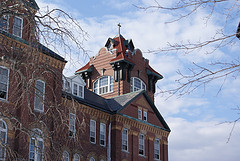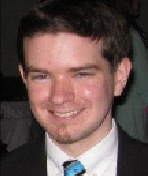
When you hear the phrase “liberal arts education”, what do you think of first? It is probably fair to say that concepts like “well-rounded”, “varied”, and “important” come to mind.
I ask this question because, with the passage of two new curriculum motions by the Faculty Senate this past week, now is the time to reconsider the scope of our definition of a liberal arts “education”. In particular, the motion to change the per-semester course load to 4 courses (each worth 4 credits), down from the current 5, is worth attention.
Our college’s mission statement reads, in part, that Saint Anselm seeks to “provid[e] all its students a distinctive liberal arts education that incorporates opportunities for professional and career preparation.” All well and good, and something that, having been a student here for nearly four years, I consider to be reasonably well-facilitated by this institution. But for me, education here has turned out to extend far beyond the classroom.
I believe implementing a 4-course/semester system would be beneficial in a major way to students of the college who, like me, participate fully in the opportunities afforded them outside the classroom.
Most students here are actively involved in at least one extra-curricular activity, whether it be a sport, club, or other organization. Many also work part time on or off campus to help offset the costs of a Saint Anselm education. Personally, as well as holding over a full course load each semester, I am also a member of the Anselmian Abbey Players Board of Directors and the Crier Editorial staff. Each of these positions (as well as the others mentioned) often constitute a workload equal to that of another academic class each semester.
I bring this up not as a way of presenting myself (or any other students) as some brand of academic martyr, but instead to raise the point that reframing the rigorous academic requirements here would actually be beneficial to many in the campus community.
Even with the caveat of less courses per semester not equaling less work overall, the value of the altered academic structure would help facilitate more focus and less stress on the part of students. As a student who is currently taking four regular courses and an independent study, I can say that having the extra time afforded to me each week to organize and accomplish tasks, academic or otherwise, has proven absolutely invaluable, despite the seemingly negligible change in my schedule.
Saint Anselm has a reputation as a challeging academic institution. However, having a rigorous academic curriculum does very little good if students are not afforded the time to fully participate in that curriculum by completing readings and other elements of courses. Reducing the course load would refocus academic efforts on quality over quantity for both students and professors.
College is not solely about academic achievement. As a senior currently engaged in job searching for after graduation, my extracurricular experiences are proving to be at least as crucial as my academic ones during my application process.
If Saint Anselm really wants to remain a contender in the ever-changing academic landscape, altering our academic framework to provide wider experiential opportunities to students is one excellent way to do so, and the recent motions passed by the Faculty Senate are the first steps in the right direction.


